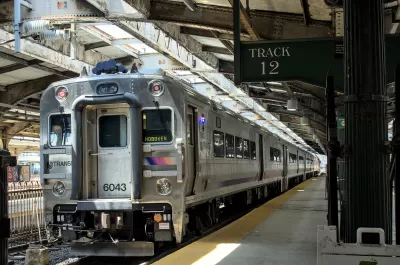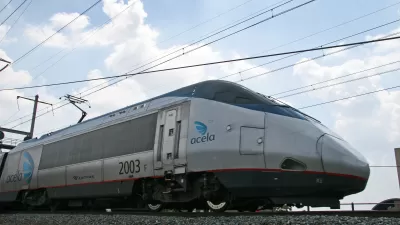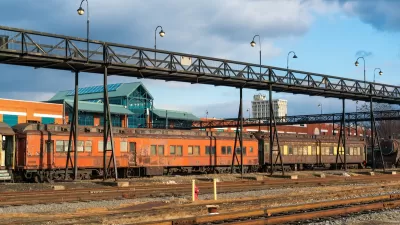The troubled agency has been canceling roughly 100 trains per week.

Writing in Curbed, Nolan Hicks takes a deep dive into New Jersey Transit’s troubled recent history, delving into the reasons why the agency has, in some cases, left passengers stranded in trains for hours — even after raising fares by 15 percent.
According to Hicks, “Two crises are unfolding simultaneously at NJ Transit.” The first, “mostly outside of NJT’s control,” is Amtrak’s failure to modernize the power grid in the Northeast Corridor, much of which NJT shares.
The second crisis is NJ Transit’s lack of resources and subsequent service cuts, with 3,400 trains canceled between January and August of this year. “Even if you subtract those that NJ Transit can pin on Amtrak, the number still stands at more than 2,300, up year-over-year by 800.”
The agency blames service interruptions on an aging fleet, but it does far less maintenance on its trains than comparable systems. Meanwhile, NJT has not added modern innovations such as elevated platforms for faster and easier boarding or electric propulsion systems that have helped systems like New York City’s MTA speed up service and reduce the time trains stop at stations. Multiple governors have promised to fund the system, only to pull back on those goals. According to Hicks, “In 2004, Trenton allocated $618 million for major projects, modernization and improvements at NJ Transit, or approximately $1 billion in today’s money. In 2024, Murphy and lawmakers allocated just $760 million for the fifth year in a row — a shortchange that adds up to $2.4 billion per decade.”
FULL STORY: Why Does NJ Transit Keep Canceling Trains?

Alabama: Trump Terminates Settlements for Black Communities Harmed By Raw Sewage
Trump deemed the landmark civil rights agreement “illegal DEI and environmental justice policy.”

Planetizen Federal Action Tracker
A weekly monitor of how Trump’s orders and actions are impacting planners and planning in America.

Why Should We Subsidize Public Transportation?
Many public transit agencies face financial stress due to rising costs, declining fare revenue, and declining subsidies. Transit advocates must provide a strong business case for increasing public transit funding.

Understanding Road Diets
An explainer from Momentum highlights the advantages of reducing vehicle lanes in favor of more bike, transit, and pedestrian infrastructure.

New California Law Regulates Warehouse Pollution
A new law tightens building and emissions regulations for large distribution warehouses to mitigate air pollution and traffic in surrounding communities.

Phoenix Announces Opening Date for Light Rail Extension
The South Central extension will connect South Phoenix to downtown and other major hubs starting on June 7.
Urban Design for Planners 1: Software Tools
This six-course series explores essential urban design concepts using open source software and equips planners with the tools they need to participate fully in the urban design process.
Planning for Universal Design
Learn the tools for implementing Universal Design in planning regulations.
Caltrans
Smith Gee Studio
Institute for Housing and Urban Development Studies (IHS)
City of Grandview
Harvard GSD Executive Education
Toledo-Lucas County Plan Commissions
Salt Lake City
NYU Wagner Graduate School of Public Service





























